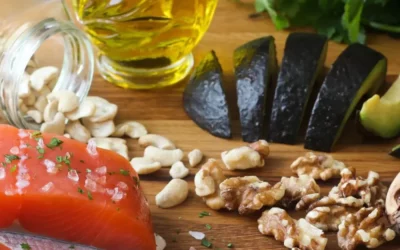In the quest for longevity and optimal health, the Blue Zone Diet emerges as a beacon of hope and inspiration. Stemming from the world’s Blue Zones—regions known for their exceptionally high number of centenarians—the Blue Zone Diet offers more than just a nutritional plan; it presents a lifestyle embraced by the world’s longest-lived people. These regions, including places like Okinawa in Japan, Sardinia in Italy, and Loma Linda in California, are not just geographical anomalies but are testament to the profound impact of diet on longevity.
The Blue Zone Diet is distinguished by its simplicity and adherence to nature’s bounty. It’s not about restrictive eating or calorie counting but about embracing food as a source of life and health. At its core, the diet is plant-based, rich in fruits, vegetables, whole grains, and legumes, complemented by moderate amounts of fish and lean meat. It emphasizes whole foods over processed ones, water over sugary drinks, and herbs and spices over salt for flavor. But beyond its components, the diet integrates principles of portion control, mindful eating, and the importance of community in mealtime rituals.
This article delves into the secrets behind the Blue Zone Diet, exploring its principles, the science backing its benefits, and how it contributes to the longevity and vitality of its adherents. Through case studies and practical tips, we aim to unravel how anyone can incorporate aspects of this life-enhancing diet into their daily routine, regardless of where they live. Join us as we explore the dietary patterns that have supported some of the healthiest and longest-lived communities on Earth, offering insights and inspiration for achieving optimal health and longevity through food.
Introduction to the Blue Zone Diet – Start a FREE quiz and find the perfect food for you.
The concept of the Blue Zone Diet is derived from a fascinating discovery in longevity research. The term “Blue Zones” was first coined by Dan Buettner, a National Geographic Fellow and author, who identified five specific regions in the world where people live significantly longer and healthier lives. These regions include Ikaria, Greece; Okinawa, Japan; Ogliastra Region, Sardinia; Loma Linda, California; and Nicoya Peninsula, Costa Rica. The Blue Zone Diet encapsulates the dietary habits common to these areas, highlighting a pattern of eating that contributes to the remarkable longevity of their populations.

At its essence, the Blue Zone Diet is not a structured diet plan but a lifestyle approach to eating and living. It emphasizes whole, plant-based foods such as vegetables, fruits, grains, nuts, seeds, and legumes, with meat and processed foods consumed sparingly. The diet is rich in nutrients and low in calories, which not only supports a healthy weight but also reduces the risk of chronic diseases. What sets the Blue Zone Diet apart from other dietary recommendations is its focus on food quality, eating patterns, and the social aspect of dining, rather than strict calorie counting or macronutrient tracking.
One of the foundational principles of the Blue Zone Diet is to eat until you are 80% full. This practice, known as “Hara Hachi Bu” in Okinawa, Japan, encourages mindful eating and portion control, preventing overeating and promoting a healthy digestive system. Another principle is the consumption of the majority of daily calories early in the day, with dinner being the smallest meal. This aligns with the body’s natural rhythms and can improve sleep quality and energy levels.
The diet also places a strong emphasis on community and social engagement. Meals are often shared with family or friends, contributing to emotional well-being and stress reduction. This social aspect of eating emphasizes the role of food in bringing people together and strengthening communal bonds, which is a key component of the lifestyle in Blue Zones.
The natural, minimally processed state of the foods in the Blue Zone Diet ensures a high intake of vitamins, minerals, fiber, and antioxidants. These nutrients are crucial for maintaining health and preventing diseases. The diet’s plant-based focus also means it’s rich in phytonutrients and compounds that offer anti-inflammatory and antioxidant properties, further bolstering longevity and reducing disease risk.
In summary, the Blue Zone Diet offers a holistic approach to health and longevity, emphasizing nutritional richness, portion control, and the joy of eating in good company. It’s a testament to the power of dietary and lifestyle choices in influencing health outcomes, showcasing that the secret to a long and healthy life might just lie in the simplicity and quality of the foods we eat, and the manner in which we enjoy them.
Principles of the Blue Zone Diet – Start a FREE quiz and find the perfect food for you.
The Blue Zone Diet is underpinned by several core principles that contribute to the health and longevity of the populations in the Blue Zones. Understanding these principles is crucial for anyone looking to incorporate the Blue Zone Diet into their life. Here are the key components:
Plant-Based Focus: The cornerstone of the Blue Zone Diet is its emphasis on plant-based foods. Fruits, vegetables, whole grains, nuts, seeds, and legumes form the bulk of the diet, providing essential nutrients, fiber, and antioxidants that promote health and longevity. Meat is eaten sparingly, typically only a few times per month, and serving sizes are kept small, treating meat more as a side dish than the main course.
The Longevity plan is a holistic approach to extending a healthy and vibrant life. By incorporating nutrient-dense foods, regular physical activity, stress management, and social connections, this comprehensive lifestyle strategy not only adds years to your life but also enhances the quality of those years. It's the blueprint for a fulfilling and thriving journey towards a long and joyful life.
Whole Foods Over Processed Foods: The diet favors whole, natural foods over processed options. This means eating foods in their most natural state, free from added sugars, unhealthy fats, and artificial additives. This principle not only supports physical health but also benefits the environment by encouraging sustainable eating habits.
Healthy Fats: Contrary to diets that advocate for low-fat consumption, the Blue Zone Diet includes healthy fats. Olive oil, avocados, and nuts are staples, providing monounsaturated and polyunsaturated fats that are beneficial for heart health.
Moderate Caloric Intake: The practice of eating to 80% fullness, as mentioned earlier, naturally leads to moderate caloric intake. This habit helps maintain a healthy weight, reduces the risk of chronic diseases, and is thought to contribute to longer lifespan.
Low Dairy and Refined Sugars: The Blue Zone Diet minimizes the intake of dairy products and refined sugars. Dairy is often replaced with plant-based alternatives, and sweets are reserved for special occasions. This approach helps mitigate the risk of diabetes, obesity, and other health issues.
Wine in Moderation: Interestingly, moderate consumption of wine, particularly red wine, is common in several Blue Zones. The antioxidants in wine, like resveratrol, have been linked to heart health and reduced inflammation. However, moderation is key, with the recommendation often being one glass per day.
Herbs and Spices Over Salt: To flavor foods, the Blue Zone Diet relies heavily on herbs and spices rather than salt. This not only enhances the taste of meals but also provides health benefits, including anti-inflammatory and antioxidant effects.
Incorporating these principles into daily life doesn’t require drastic changes overnight. Small, incremental adjustments, such as increasing the amount of plant-based foods on your plate, reducing meat consumption, and choosing whole grains over refined grains, can make a significant difference over time. The Blue Zone Diet is more about an overall approach to food and eating rather than strict rules, emphasizing the importance of quality, balance, and enjoyment in what we eat.
Benefits of Following the Blue Zone Diet – Start a FREE quiz and find the perfect food for you.
Adopting the Blue Zone Diet has been linked to a myriad of health benefits, drawing from the longevity and vitality observed in the world’s Blue Zones. Here are some of the key benefits that research and observations have highlighted:
Increased Lifespan: Perhaps the most compelling aspect of the Blue Zone Diet is its association with increased longevity. The diet’s emphasis on plant-based foods, low meat consumption, and natural, whole foods contributes to lower rates of chronic diseases and conditions that can shorten life span, such as heart disease, obesity, and certain cancers.
Reduced Risk of Chronic Diseases: The dietary patterns of the Blue Zone Diet are rich in nutrients, antioxidants, and fiber, which are essential for maintaining good health and preventing chronic diseases. Studies have shown that a diet high in fruits, vegetables, whole grains, and legumes, coupled with low consumption of processed foods and meats, can significantly reduce the risk of heart disease, diabetes, and certain types of cancer.
Improved Mental Health and Cognitive Function: The nutrients found in the plant-based components of the Blue Zone Diet are not only beneficial for physical health but also for mental health. Omega-3 fatty acids, antioxidants, and phytonutrients can improve mood, reduce the risk of depression, and protect against cognitive decline, supporting brain health as we age.
Enhanced Digestive Health: A diet high in fiber from fruits, vegetables, whole grains, and legumes promotes healthy digestion and prevents gastrointestinal problems. Fiber supports a healthy gut microbiome, which is crucial for digestion, immunity, and even mental health.
Weight Management: Following the Blue Zone Diet naturally supports weight management. The diet’s focus on whole, nutrient-dense foods helps regulate appetite and prevent overeating, while the practice of eating until 80% full helps control calorie intake without the need for calorie counting or restrictive dieting.
Sustainability: Beyond personal health benefits, the Blue Zone Diet also aligns with principles of sustainability. A plant-based diet requires fewer resources (such as water and land) and generates lower levels of greenhouse gas emissions compared to diets high in meat and processed foods.
Incorporating the Blue Zone Diet into one’s lifestyle not only promotes a longer, healthier life but also contributes to a more sustainable and environmentally friendly way of living. The benefits extend from the individual to the community and the planet, showcasing the diet’s holistic approach to health and well-being.
Case Studies from the Blue Zones
The Blue Zones—regions of the world where people live significantly longer and healthier lives—offer remarkable case studies that illustrate the profound impact of diet and lifestyle on longevity. Through examining the lives of those in areas such as Okinawa, Japan; Sardinia, Italy; and Loma Linda, California, we can glean valuable lessons on the dietary habits and lifestyle practices that contribute to their remarkable health and longevity.
Okinawa, Japan: Okinawa is renowned for its high number of centenarians and a low incidence of age-related diseases. The diet here is based on principles of moderation and variety, heavily featuring vegetables, tofu, and fish. Okinawans traditionally consume a diet low in calories but high in nutrition, with a focus on sweet potatoes, green and yellow vegetables, soy products, and a variety of spices and herbs. Their philosophy of “Hara Hachi Bu,” eating until they’re 80% full, plays a crucial role in their dietary practice.
Sardinia, Italy: In the mountainous regions of Sardinia, the diet leans heavily on whole-grain bread, beans, garden vegetables, fruits, and, in particular, a specific type of red wine known for its high levels of antioxidants. Sardinians consume plenty of leafy greens and rely on pecorino cheese made from grass-fed sheep, which is high in omega-3 fatty acids. Their diet, rich in phytonutrients and omega-3s, along with an active lifestyle that includes regular physical activity, contributes to their longevity.
Loma Linda, California: This community of Seventh-day Adventists stands out in the United States for its high concentration of centenarians. Their longevity is attributed to a diet that is largely vegetarian, rich in fruits, vegetables, whole grains, nuts, and legumes. Regular physical activity, a strong community support system, and a focus on spirituality are also integral to their lifestyle.
Nicoya Peninsula, Costa Rica and Ikaria, Greece: Both regions emphasize diets rich in legumes, whole grains, fruits, vegetables, and fish. They share commonalities in their consumption of local, seasonal foods, minimal meat consumption, and the use of healthy fats like olive oil. Community, family, and an active lifestyle are central to their way of life.
These case studies reveal a common thread among the Blue Zones: a diet rich in plant-based foods, moderate protein intake primarily from fish, minimal consumption of meat and processed foods, and a lifestyle that includes regular physical activity, strong social connections, and a sense of purpose. These elements combine to create environments conducive to health, happiness, and longevity.

How to Implement the Blue Zone Diet in Your Life
Embracing the Blue Zone Diet doesn’t require moving to one of the world’s longevity hotspots; instead, it’s about incorporating its principles into your daily routine, no matter where you live. Here are some practical tips for implementing the Blue Zone Diet into your life:
Start with Plant-Based Foods: Make fruits, vegetables, whole grains, and legumes the center of your meals. Aim to fill at least half of your plate with plant-based foods at every meal. Experiment with different recipes to discover new favorite dishes.
Incorporate Healthy Fats: Use olive oil for cooking and salad dressings, snack on nuts for a healthy dose of fats, and add avocados to your meals for flavor and texture.
Reduce Meat Consumption: Treat meat as a side dish or condiment rather than the main course. Try to limit meat consumption to a few times a month and opt for lean options like chicken or fish when you do eat it.
Eat Mindfully: Adopt the practice of “Hara Hachi Bu” by eating slowly and stopping when you’re 80% full. This can help prevent overeating and promote better digestion.
Limit Processed Foods and Sugars: Make a conscious effort to reduce your intake of processed foods and sugary snacks. Instead, satisfy your sweet tooth with fruit or small amounts of dark chocolate.
Enjoy Meals with Others: Whenever possible, share your meals with family or friends. Eating together encourages slower eating, better digestion, and stronger social bonds.
Stay Active: Incorporate regular physical activity into your daily routine, whether it’s walking, gardening, yoga, or any other form of exercise you enjoy.
Drink in Moderation: If you choose to drink alcohol, do so in moderation. A glass of red wine with dinner is consistent with the Blue Zone Diet, but it’s not necessary for everyone.
Plan and Prepare: Take time to plan your meals for the week, focusing on whole, plant-based ingredients. Preparing meals at home allows you to control the ingredients and ensure you’re sticking to the Blue Zone principles.
Implementing the Blue Zone Diet is about making gradual changes that align with a healthier, more sustainable lifestyle. It’s not about perfection or rigid adherence to rules but about finding a balanced, enjoyable way of eating that promotes longevity and well-being.
The Longevity plan is a holistic approach to extending a healthy and vibrant life. By incorporating nutrient-dense foods, regular physical activity, stress management, and social connections, this comprehensive lifestyle strategy not only adds years to your life but also enhances the quality of those years. It's the blueprint for a fulfilling and thriving journey towards a long and joyful life.
Conclusion
The Blue Zone Diet, inspired by the dietary patterns and lifestyles of the world’s longest-lived populations, offers more than just a guide to eating well; it presents a holistic approach to living a longer, healthier life. This diet emphasizes the importance of plant-based foods, moderate consumption of animal products, and the inclusion of healthy fats, along with a strong focus on family, community, and physical activity. By adopting principles such as eating until 80% full, reducing intake of processed foods and sugars, and enjoying meals in the company of others, we can take meaningful steps toward enhancing our health and well-being.
The case studies from Okinawa, Sardinia, Loma Linda, and other Blue Zones illustrate that longevity is not just about what we eat, but how we live. These communities show us the value of a balanced diet, a supportive social network, regular physical activity, and a positive outlook on life. Implementing the Blue Zone Diet in our lives doesn’t require drastic changes; it’s about making incremental adjustments that align with a more natural, joyous, and connected way of living.
As we look to the Blue Zones for inspiration, we find a path to not only extend our years but to enrich them with health, happiness, and a deep sense of fulfillment. The Blue Zone Diet is more than a nutritional plan—it’s a blueprint for a vibrant, flourishing life. Let us embrace these lessons and make the choices that lead us to a longer, more vibrant future.












